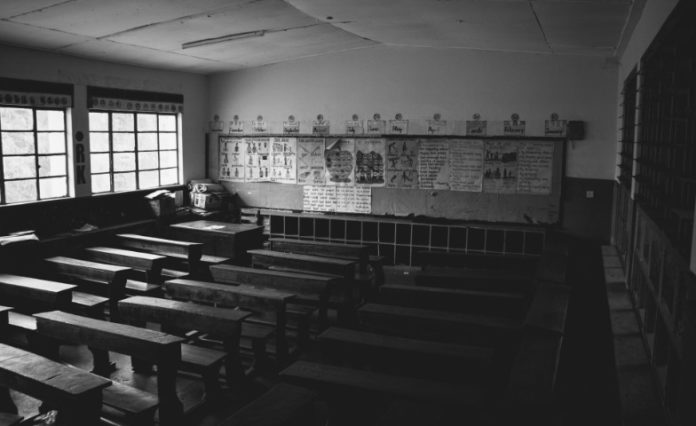Schools in Ireland have been closed since Thursday 12th March. A measure that would have seemed draconian in 2019 is now commonplace throughout much of the world. According to a UN report, nearly 190 countries have imposed school closures, affecting 1.5 billion children and young people. Consequently, students and educators alike are having to adapt to learning from home. UNESCO Director-General Audrey Azoulay stressed that the United Nations is providing aid to adapt: “We are working with countries to assure the continuity of learning for all, especially disadvantaged children and youth who tend to be the hardest hit by school closures.”
In order to ascertain the views, opinions and experiences of parents and guardians of young people during the COVID-19 public health crisis, the National Parents Council Post Primary, a national representative body for parents and guardians of young people in post-primary education in Ireland, conducted a survey of 4,300 parents of junior and senior school children.
The report revealed that virtual learning has become integral to home education. 94% of students say that they are using a combination of text books and digital tools. The majority of students (79%) indicated that no difficulties had been experienced and, if they have, the issues have been addressed promptly. Most young people are still completing assignments and receiving teacher’s feedback on them.
According to Anne Marie Breathnach, who teaches Senior Infant boys in Dublin, schools are adapting by “distributing work via PowerPoints that the parents access from the school website. One constant that each educator wants to stress is that the work we are giving is to help and support the children we teach through this unprecedented time. This is not the same as home schooling, where the parents have made the active choice to educate their child and deliver the curriculum. It’s definitely challenging as a teacher when you would never deliver a one-size-fits-all lesson in school, so how can we do so now.”
Some students have found the change to using digital technology relatively straightforward since 38% of students were already utilising tablet devices and technology in their daily school lives. However, these technological advantages are not universal. Problems can arise in more rural areas. 39% of respondents said that they are having issues with intermittent Wi-Fi services. There are also problems for students who struggle with the new teaching environment.
Hayley McLoughlin, who teaches languages in a secondary school in Ireland, is concerned about the limitations of virtual learning:
“Our jobs have changed immensely, we have gone from having quite an active job and being around our students all day to sitting behind a screen, it’s extremely different. Many of us are feeling somewhat useless, especially to the students who don’t have any internet access or to the students who are falling behind because they are struggling to learn new topics through a computer screen. I suppose the only positive is that we are being forced to come up with more innovative ways to use technology in our teaching, but overall it has proven to be very difficult.”
These views were echoed by Ami Gallagher, a Dublin primary school teacher, who commented on the difficulties of teaching younger children using virtual methods:
“Children in infant class (5-6 years of age) have shorter attention spans and therefore, conducting classes via zoom can be problematic. The strategy we are using is providing daily plans which are as accessible and easy as possible to follow. Although this can be effective, it comes with guilt as we are aware of the struggles parents are facing trying to juggle parenting, homeschooling and working from home full time. While there has been a lot of positive feedback, I have also received messages of despair from parents who are struggling to access online materials, without having a number of screens and a tech-savvy competency. More often than not, parents are using their devices to work from home themselves and may not have time to allow their child to use their computer for extended periods of time. Therefore, the general guidance we are giving is, do what you can. Don’t put yourself under massive pressure to get everything done.”
Child studying in Ireland, photo credits: © Leah Palleschi
The NPCPP survey concluded that some parents and guardians are experiencing difficulties continuing education at home despite the efforts of schools and teachers and recommend the following measures; that partners in education should continue to collaborate effectively on initiatives to support student wellbeing, that necessary supports for students with additional needs should be provided on an individualised basis to ensure that inequalities in education do not become more pronounced during the current crisis, and that efforts should be made to ensure all students have the means necessary to work efficiently from home.
UN Secretary-General António Guterres has called for urgent action to support the world’s children amid the universal crisis. “Thankfully, children have so far been largely spared from the most severe symptoms of the disease. But their lives are being totally upended”, he said, stating that the losses in learning today, and in their future development, are hard to fathom. “Some schools are offering distance learning, but this is not available to all”, the Secretary-General said, adding that children in countries with slow and expensive Internet services are severely disadvantaged. “With the pandemic placing so many of the world’s children in jeopardy, I reiterate my urgent appeal: let us protect our children and safeguard their well-being.”
Additional links:


